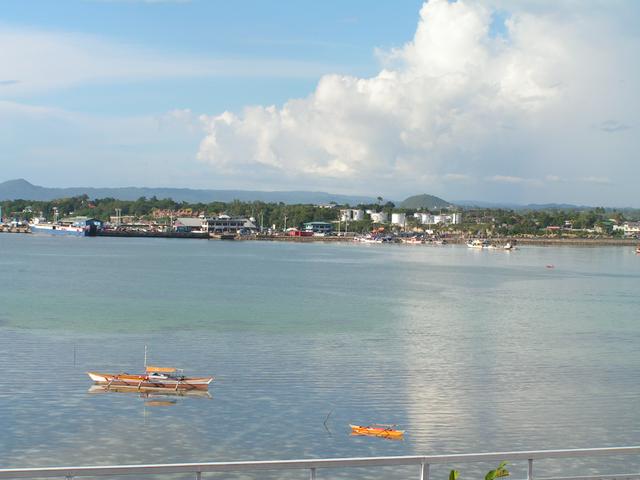 Tagbilaran is the capital city of the island province of Bohol in the Philippines. With close to 100,000 residents it is the main point of entry to Bohol and serves as the province's political, social and economic center. Besides, it's known as the "City of Friendship" and was recognized as one of the most liveable cities in the Philippines by the Asian Institute of Management in 2005 and 2007.
Tagbilaran is the capital city of the island province of Bohol in the Philippines. With close to 100,000 residents it is the main point of entry to Bohol and serves as the province's political, social and economic center. Besides, it's known as the "City of Friendship" and was recognized as one of the most liveable cities in the Philippines by the Asian Institute of Management in 2005 and 2007.
Despite being the capital of Bohol, and despite its relative size, Tagbilaran does not feel like a big city. In some respects the city feels more like a provincial town rather than the bustling capital city of one of the Philippines' best-known provinces, and rightfully so. Few establishments are open 24 hours, many stores are closed on Sunday, traffic is almost non-existent, and Tagbilaranons (as local residents are called) seem to be more relaxed than their counterparts in larger cities.
However, this atmosphere does yield several positives: locals are very friendly, the city is very safe, and as the introduction of most tourists to Bohol, Tagbilaran gives a good picture of what one can expect from the rest of the province.
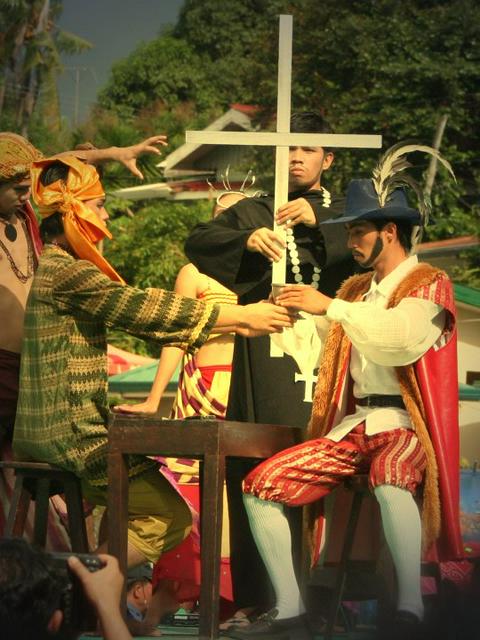 Little is known about the pre-history of Tagbilaran, although it is believed to have been a trading outpost where, according to Spanish accounts, the natives conducted trade with China, the Malay states and present-day Indonesia. It is said that around the year 1200, the Lutaos of northern Mindanao established settlements on stilts along the Tagbilaran Strait, separating mainland Bohol from Panglao Island (which today separates Tagbilaran from Dauis), which later became the Kingdom of Dapitan, a prosperous local center of power. It is believed that these settlements were abandoned by 1563 due to attacks by the Portuguese and their allies from Ternate. Another kingdom, the Bool Kingdom, may have also existed within city limits in the 15th century.
Little is known about the pre-history of Tagbilaran, although it is believed to have been a trading outpost where, according to Spanish accounts, the natives conducted trade with China, the Malay states and present-day Indonesia. It is said that around the year 1200, the Lutaos of northern Mindanao established settlements on stilts along the Tagbilaran Strait, separating mainland Bohol from Panglao Island (which today separates Tagbilaran from Dauis), which later became the Kingdom of Dapitan, a prosperous local center of power. It is believed that these settlements were abandoned by 1563 due to attacks by the Portuguese and their allies from Ternate. Another kingdom, the Bool Kingdom, may have also existed within city limits in the 15th century.
The first recorded event in what is now believed to be Tagbilaran was the Sandugo. Known as the first treaty of friendship between Filipinos and Spaniards, this blood compact was effected between local chieftain Rajah Sikatuna and explorer (and later Governor-General of the Philippines) Miguel López de Legazpi, which reportedly took place in what is now the eastern outskirts of the city. (This fact has now disputed by recent historical findings claiming that the event may have actually taken place in Loay, away.)
Tagbilaran used to be part of neighboring Baclayon, and its parish church was one of the six churches of Bohol established by the Jesuits when they came to the island in 1595 to evangelize and convert the natives to Christianity. The town was later split from Baclayon in 1742, when Father Cesar Felipe Doria, Rector of the Jesuits in Bohol, petitioned for the creation of a new town as he believed Baclayon became too large to be administered by a single priest, and the town was dedicated to Saint Joseph the Worker, hence the town was originally called San José de Tagbilaran. It later became the capital of Bohol in 1854, after the island was made a separate province from neighboring Cebu.
The town grew throughout the Spanish and American regimes, and on 1 July 1966, Tagbilaran was elevated to a city by virtue of Republic Act No. 4660.
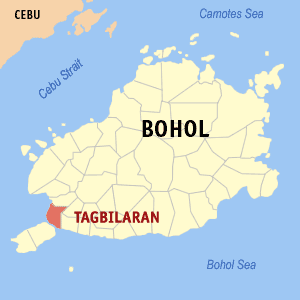 Tagbilaran is divided into 15 barangays, which are commonly referred to as "districts". Most economic activity is concentrated in the city center, which consists of Poblacion I, II, III and Cogon (immediately north of Poblacion II). The city's remaining 11 barangays are more rural and more closely resemble neighboring towns, although they become more urbanized approaching the city center.
Tagbilaran is divided into 15 barangays, which are commonly referred to as "districts". Most economic activity is concentrated in the city center, which consists of Poblacion I, II, III and Cogon (immediately north of Poblacion II). The city's remaining 11 barangays are more rural and more closely resemble neighboring towns, although they become more urbanized approaching the city center.
The main language of Tagbilaran, like the rest of Bohol, is Boholano, a dialect of Cebuano which differs from standard Cebuano largely in terms of pronunciation. These differences sometimes have linguists describe Boholano as a separate language altogether. Despite this, standard Cebuano is understood by Boholano speakers, as it is the language used in Cebuano-language mass media, and Boholano as spoken in Tagbilaran is closer to standard Cebuano than the Boholano spoken further inland. English is also well-understood by most city residents, although Tagbilaranons speak it to varying levels of fluency.
Unlike in neighboring Cebu, Tagbilaranons (and Boholanos in general) are less hesitant to speak Filipino, especially owing to the influx of local tourists from non-Cebuano speaking regions of the Philippines. Many Boholanos will know how to speak Filipino as Filipino language instruction is required in school, and they will normally respond in Filipino when spoken to in Filipino, though some will respond instead in English (as in Cebu). However, it is not uncommon for a Tagbilaranon to ask a Filipino speaker if one is new to the city, as speaking in Filipino is often (though not always) an indicator of not being resident in Tagbilaran.
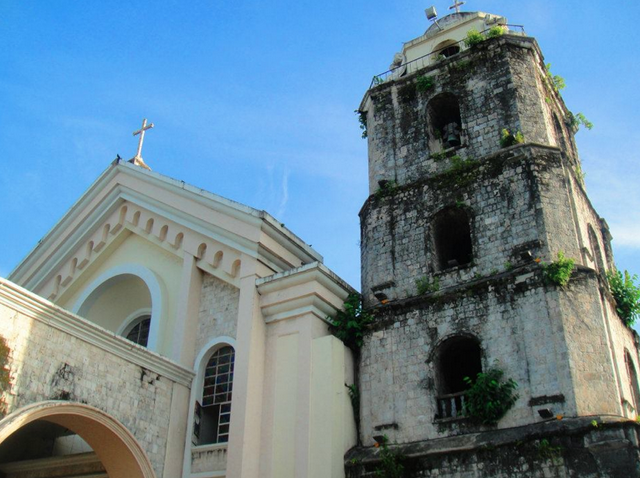
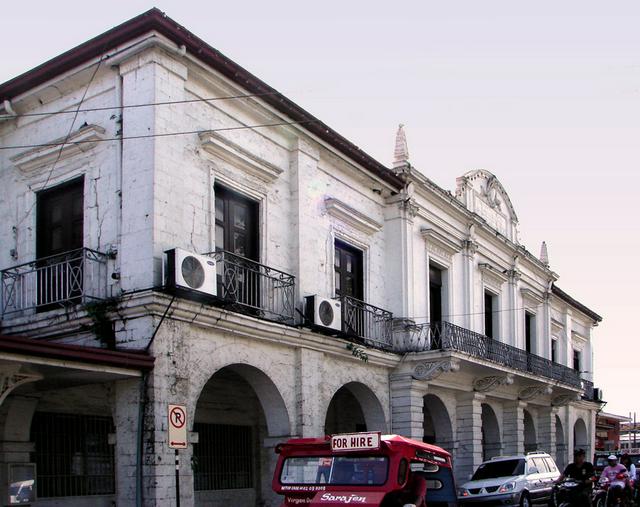 Tagbilaran is often perceived as a city with nothing to see, and tourists often skip the city in favor of better-known sites in other parts of Bohol. However, contrary to popular belief, the city does have a number of unique sites.
Tagbilaran is often perceived as a city with nothing to see, and tourists often skip the city in favor of better-known sites in other parts of Bohol. However, contrary to popular belief, the city does have a number of unique sites.
- Carlos P. Garcia House, A. Hontanosas cor. F. Rocha Sts., Poblacion II. The residence of the former Philippine President and his family in Tagbilaran, it has been converted into a museum featuring presidential memorabilia. Much of the house's original furniture has also been preserved, including the former President's bed and work desk. While admission is free, a donation box is set up by the entrance. Free.
- Casa Rocha-Suarez Heritage Center, 3 A. Torralba Street, Poblacion II, +63 920 950 3799. Built sometime between 1800 and 1830, it is one of the oldest standing structures in Tagbilaran, and one of the few remaining trading villas in Bohol. Owned by the Rocha-Suarez family, it was converted into a museum in 2005, with several of the family's furniture, heirlooms, personal effects and mementos, accumulated over five generations, on display.
- National Museum of the Philippines, Bohol Branch, Carlos P. Garcia Avenue, Poblacion II (beside the Provincial Capitol of Bohol. Tu-Su 9AM-5PM. It was the Escuela La Niña, and then becsme the Provincial Library of Bohol. The museum was opened in July 2008 after moving from the Carlos P. Garcia House. The museum has exhibits on the wildlife, traditions and culture of Bohol, the island's geological history, as well as a room featuring paintings from students throughout the province. .
- Plaza Rizal, Carlos P. Garcia Avenue, Poblacion II (in front of the National Museum and the Provincial Capitol of Bohol. Formerly the Plaza del Principe, it is the traditional center of the city. A monument to José Rizal stands in the center, while a monument to Carlos P. Garcia stands to the east. A replica of the Chocolate Hills is located to the west beside the Rizal monument.
- President Carlos P. Garcia Memorial Park, Tagbilaran North Road, Booy (across from the Bohol Wisdom School. The largest park in the city, it fronts the site of the future new Provincial Capitol of Bohol. A large monument to Carlos P. Garcia is located in the park's center.
- Site of the Blood Compact, Tagbilaran East Road, Bool (across from Bool Elementary School. One of the city's most famous tourist attractions. This is a sculpture commemorating the Sandugo (blood compact) made between Datu Sikatuna and Miguel Lopez de Legazpi in 1565, with a wonderful view of the Bohol Sea and coastal mangroves. 100 m to the east is a marker erected by the now-National Historical Commission of the Philippines in 1941 for the same event.
- St. Joseph the Worker Cathedral, Sarmiento Street, Poblacion II (opposite Plaza Rizal. The seat of the Diocese of Tagbilaran, it is one of the six original churches of Bohol established by the Jesuits in 1595. The current church structure however dates back to the mid-1800s, after the original church burned down.
-VTbxB.medium.jpg) A tiny town away from Tagbilaran, the main attraction of which is the Tarsier Visitors Center, out of town. The town has no place to eat, or to sleep.
A tiny town away from Tagbilaran, the main attraction of which is the Tarsier Visitors Center, out of town. The town has no place to eat, or to sleep.
Getting there: jeepneys and buses are available at Tagbilaran's main bus terminal, fares are and the ride is around 40 minutes. Taxis are faster, but more expensive, with prices about several hundreds of pesos. However, the center of Corella is located in the forest and there are no taxis or tricycles anywhere in sight, passing jeepneys and buses can take you to nearby destinations, such as Tagbilaran or Loboc.
- Tarsier Research and Development Center, Tarsier Sunctuary Rd, +63 9089378094. 9AM-4PM. Tarsier (Tarsius syrichta) is one of the world's smallest primates, and it is endemic to Bohol. At the sanctuary, a spacious net enclosure keeps a number of Philippine Tarsiers for feeding, captive breeding and display. Here, visitors can observe the Philippine Tarsier in their natural habitat. Within the sanctuary, the Philippine Tarsiers roam freely and all of them have got used to a seven-foot high fence that circumscribes the territory and which serves mainly to protect them from predators like feral cats while maintaining a theoretical chance for tarsiers to leave the enclosure and return as their wish. The center itself serves as a visitor center and venue for research, as well as a habitat preserve. Two treks are available there: Daily Tarsier Encounter - a 20-30 minute Trek into the forest with a guide to see the tarsier, and Trek to Viewing Decks - a 2-3 hours one way trek to the viewing decks close to the center of the 167 hectare forest. Entrance fee which includes small trek - per person, trek to viewing decks - per group.
- The Church of Corella.
Tarsier Research and Development Center, Tarsier Sunctuary Rd, +63 9089378094. 9AM-4PM. Tarsier (Tarsius syrichta) is one of the world's smallest primates, and it is endemic to Bohol. At the sanctuary, a spacious net enclosure keeps a number of Philippine Tarsiers for feeding, captive breeding and display. Here, visitors can observe the Philippine Tarsier in their natural habitat. Within the sanctuary, the Philippine Tarsiers roam freely and all of them have got used to a seven-foot high fence that circumscribes the territory and which serves mainly to protect them from predators like feral cats while maintaining a theoretical chance for tarsiers to leave the enclosure and return as their wish. The center itself serves as a visitor center and venue for research, as well as a habitat preserve. Two treks are available there: Daily Tarsier Encounter - a 20-30 minute Trek into the forest with a guide to see the tarsier, and Trek to Viewing Decks - a 2-3 hours one way trek to the viewing decks close to the center of the 167 hectare forest. Entrance fee which includes small trek - per person, trek to viewing decks - per group.
The Church of Corella.
Carlos P. Garcia House, A. Hontanosas cor. F. Rocha Sts., Poblacion II. The residence of the former Philippine President and his family in Tagbilaran, it has been converted into a museum featuring presidential memorabilia. Much of the house's original furniture has also been preserved, including the former President's bed and work desk. While admission is free, a donation box is set up by the entrance. Free.
Casa Rocha-Suarez Heritage Center, 3 A. Torralba Street, Poblacion II, +63 920 950 3799. Built sometime between 1800 and 1830, it is one of the oldest standing structures in Tagbilaran, and one of the few remaining trading villas in Bohol. Owned by the Rocha-Suarez family, it was converted into a museum in 2005, with several of the family's furniture, heirlooms, personal effects and mementos, accumulated over five generations, on display.
National Museum of the Philippines, Bohol Branch, Carlos P. Garcia Avenue, Poblacion II (beside the Provincial Capitol of Bohol. Tu-Su 9AM-5PM. It was the Escuela La Niña, and then becsme the Provincial Library of Bohol. The museum was opened in July 2008 after moving from the Carlos P. Garcia House. The museum has exhibits on the wildlife, traditions and culture of Bohol, the island's geological history, as well as a room featuring paintings from students throughout the province. .
Plaza Rizal, Carlos P. Garcia Avenue, Poblacion II (in front of the National Museum and the Provincial Capitol of Bohol. Formerly the Plaza del Principe, it is the traditional center of the city. A monument to José Rizal stands in the center, while a monument to Carlos P. Garcia stands to the east. A replica of the Chocolate Hills is located to the west beside the Rizal monument.
President Carlos P. Garcia Memorial Park, Tagbilaran North Road, Booy (across from the Bohol Wisdom School. The largest park in the city, it fronts the site of the future new Provincial Capitol of Bohol. A large monument to Carlos P. Garcia is located in the park's center.
Site of the Blood Compact, Tagbilaran East Road, Bool (across from Bool Elementary School. One of the city's most famous tourist attractions. This is a sculpture commemorating the Sandugo (blood compact) made between Datu Sikatuna and Miguel Lopez de Legazpi in 1565, with a wonderful view of the Bohol Sea and coastal mangroves. 100 m to the east is a marker erected by the now-National Historical Commission of the Philippines in 1941 for the same event.
St. Joseph the Worker Cathedral, Sarmiento Street, Poblacion II (opposite Plaza Rizal. The seat of the Diocese of Tagbilaran, it is one of the six original churches of Bohol established by the Jesuits in 1595. The current church structure however dates back to the mid-1800s, after the original church burned down.
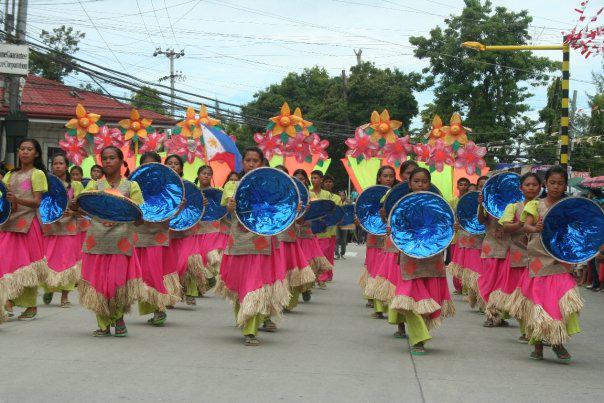
Tagbilaran celebrates three major festivals.
- The Ubi Festival is celebrated every January in honor of Bohol's most famous agricultural export, ubi (purple yam). With most celebrations taking place in Plaza Rizal, there are exhibits featuring sustainable agriculture and the plant's uses, a contest for the best ubi specimen and upcoming products, as well as a motorcade through the city.
- The Tagbilaran City Fiesta is the city's official fiesta, celebrated every May in honor of the city's patron saint, Saint Joseph the Worker, whose feast day is on 1 May. This fiesta also opens Bohol's "Month of Fiestas", as every town in Bohol has a May fiesta. Nightly activities are held in the nine days leading to the fiesta itself, such as the Mutya ng Tagbilaran beauty pageant, stage productions and concerts. On the day itself, motorcades and a street dancing festival take place in the city center.
- The Sandugo Festival is Tagbilaran's major festival, and it is celebrated every July to commemorate the blood compact made between Rajah Sikatuna and Miguel López de Legazpi, often coinciding with the charter anniversary of the city. Highlights include a re-enactment of the Sandugo, a street dancing festival through the city center, and the Miss Bohol Sandugo beauty pageant.
The Ubi Festival is celebrated every January in honor of Bohol's most famous agricultural export, ubi (purple yam). With most celebrations taking place in Plaza Rizal, there are exhibits featuring sustainable agriculture and the plant's uses, a contest for the best ubi specimen and upcoming products, as well as a motorcade through the city.
The Tagbilaran City Fiesta is the city's official fiesta, celebrated every May in honor of the city's patron saint, Saint Joseph the Worker, whose feast day is on 1 May. This fiesta also opens Bohol's "Month of Fiestas", as every town in Bohol has a May fiesta. Nightly activities are held in the nine days leading to the fiesta itself, such as the Mutya ng Tagbilaran beauty pageant, stage productions and concerts. On the day itself, motorcades and a street dancing festival take place in the city center.
The Sandugo Festival is Tagbilaran's major festival, and it is celebrated every July to commemorate the blood compact made between Rajah Sikatuna and Miguel López de Legazpi, often coinciding with the charter anniversary of the city. Highlights include a re-enactment of the Sandugo, a street dancing festival through the city center, and the Miss Bohol Sandugo beauty pageant.
- There are five malls in Tagbilaran, three of which are in the city center.
- BQ Mall, Carlos P. Garcia Avenue, Poblacion II. Daily 8:30AM-8PM. This four-storey building has a movie theater, a BQ supermarket, several stores, and its own small department store with a large souvenir section.
- Island City Mall, Rajah Sikatuna Avenue, Dampas (beside the Tagbilaran Public Market and the Tagbilaran City Integrated Bus Terminal. Daily 8AM-9PM. The largest mall in the city, it has several shops, a movie theater, a department store and a large Alturas supermarket. The mall is also the terminus for a number of jeepney routes within the city and to neighboring towns.
- Plaza Marcela, Pamaong cor. Belderol Sts., Cogon. This mall is the closest shopping center to the airport and seaport. Has a Alturas supermarket
- Tagbilaran City Square, Carlos P. Garcia Avenue, Poblacion II (across from BQ Mall. 9AM-8PM daily. The smallest of the city's malls, it promotes itself as Tagbilaran's version of the Greenhills Shopping Center in Manila. It is built on the site of the old Tagbilaran Public Market, which moved to the city's northern outskirts beside the Island City Mall. The two-storey mall has several computer and mobile phone stores, and wholesale products on the second floor.
- Alturus Supermarkets.
- Alturas Mall, B. Inting Street, +63 38-501300. 8AM-9PM. Has an Alturas supermarket. lower price.
- Unitop Department Store, Carlos P Garcia Avenue, +63 38-5018686. 8AM-8PM. lower price.
BQ Mall, Carlos P. Garcia Avenue, Poblacion II. Daily 8:30AM-8PM. This four-storey building has a movie theater, a BQ supermarket, several stores, and its own small department store with a large souvenir section.
Island City Mall, Rajah Sikatuna Avenue, Dampas (beside the Tagbilaran Public Market and the Tagbilaran City Integrated Bus Terminal. Daily 8AM-9PM. The largest mall in the city, it has several shops, a movie theater, a department store and a large Alturas supermarket. The mall is also the terminus for a number of jeepney routes within the city and to neighboring towns.
Plaza Marcela, Pamaong cor. Belderol Sts., Cogon. This mall is the closest shopping center to the airport and seaport. Has a Alturas supermarket
Tagbilaran City Square, Carlos P. Garcia Avenue, Poblacion II (across from BQ Mall. 9AM-8PM daily. The smallest of the city's malls, it promotes itself as Tagbilaran's version of the Greenhills Shopping Center in Manila. It is built on the site of the old Tagbilaran Public Market, which moved to the city's northern outskirts beside the Island City Mall. The two-storey mall has several computer and mobile phone stores, and wholesale products on the second floor.
Alturus Supermarkets.
Alturas Mall, B. Inting Street, +63 38-501300. 8AM-9PM. Has an Alturas supermarket. lower price.
Unitop Department Store, Carlos P Garcia Avenue, +63 38-5018686. 8AM-8PM. lower price.
Aside from the standard Philippine chain restaurants Tagbilaran also has a number of unique places to eat.
- Chicken Ati-Atihan, Ma. Clara Wharf Road, Cogon (up the street from the Tagbilaran City Tourist Pier, +63 38 507-9963. The main competitor to Jo's Chicken Inatô, this open-air restaurant serves Filipino dishes alongside its special grilled chicken. on average.
- Garden Café, Juan S. Torralba Avenue, Poblacion II (beside the St. Joseph the Worker Cathedral, +63 38 411-3701. This restaurant is owned and operated by the Philippine chapter of the International Deaf Education Association (IDEA), and true to its ownership, most of the employees are members of the local deaf community.
- JERAC's Pizza, G/F Gallares Court, Graham Ave. cor. Ma. Clara Wharf Rd., Cogon (beside the entrance to the Tagbilaran City Tourist Pier, +63 38 501-8383. Daily 10AM-11PM. This pizzeria is home to Tagbilaran's largest pizza, measuring 22 inches (around ).
- JJ's Seafood Village, Knights of Columbus Drive, Poblacion II (beside the Knights of Columbus Wharf, +63 38 412-3756. Located along the shores of Tagbilaran Bay, this restaurant specializes in several cuisines, though true to its name, it serves many seafood dishes. The "village" also has conference facilities, a pool and a small hotel inside ( for a double room).
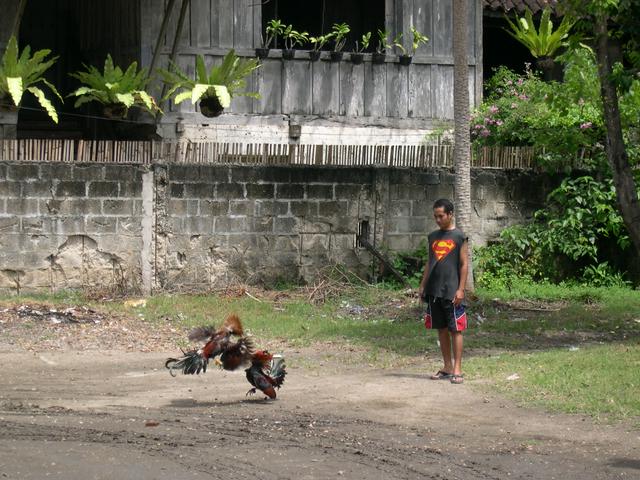
- Jo's Chicken Inatô, Carlos P. Garcia East Ave. cor. S. Matig-a St., Poblacion I, +63 38 501-7582. This restaurant specializes in chicken inatô, the Cebuano version of the more-well known chicken inasal found on Negros. They also serve Boholano versions of Cebuano delicacies, such as binakhaw (local kinilaw, or vinegared fish), as well as standard Filipino fare. .
- Shiang MaNou, J. Borja cor. C. Gallares Sts., Poblacion II, +63 38 411-4373. Serving mostly traditional Cantonese dishes, this is one of two upscale Chinese restaurants in the city. It however also has a selection of budget meals for . .
- Sweet Home Café, J. Borja cor. Remolador Sts., Poblacion II (across from the Holy Spirit School, +63 932 327-3154. Daily 7AM-midnight. This quiet café is tucked away from the main downtown area. They serve coffee shop staples (i.e. cakes and pastries), and mains. on average.
Chicken Ati-Atihan, Ma. Clara Wharf Road, Cogon (up the street from the Tagbilaran City Tourist Pier, +63 38 507-9963. The main competitor to Jo's Chicken Inatô, this open-air restaurant serves Filipino dishes alongside its special grilled chicken. on average.
Garden Café, Juan S. Torralba Avenue, Poblacion II (beside the St. Joseph the Worker Cathedral, +63 38 411-3701. This restaurant is owned and operated by the Philippine chapter of the International Deaf Education Association (IDEA), and true to its ownership, most of the employees are members of the local deaf community.
JERAC's Pizza, G/F Gallares Court, Graham Ave. cor. Ma. Clara Wharf Rd., Cogon (beside the entrance to the Tagbilaran City Tourist Pier, +63 38 501-8383. Daily 10AM-11PM. This pizzeria is home to Tagbilaran's largest pizza, measuring 22 inches (around ).
JJ's Seafood Village, Knights of Columbus Drive, Poblacion II (beside the Knights of Columbus Wharf, +63 38 412-3756. Located along the shores of Tagbilaran Bay, this restaurant specializes in several cuisines, though true to its name, it serves many seafood dishes. The "village" also has conference facilities, a pool and a small hotel inside ( for a double room).
Jo's Chicken Inatô, Carlos P. Garcia East Ave. cor. S. Matig-a St., Poblacion I, +63 38 501-7582. This restaurant specializes in chicken inatô, the Cebuano version of the more-well known chicken inasal found on Negros. They also serve Boholano versions of Cebuano delicacies, such as binakhaw (local kinilaw, or vinegared fish), as well as standard Filipino fare. .
Shiang MaNou, J. Borja cor. C. Gallares Sts., Poblacion II, +63 38 411-4373. Serving mostly traditional Cantonese dishes, this is one of two upscale Chinese restaurants in the city. It however also has a selection of budget meals for . .
Sweet Home Café, J. Borja cor. Remolador Sts., Poblacion II (across from the Holy Spirit School, +63 932 327-3154. Daily 7AM-midnight. This quiet café is tucked away from the main downtown area. They serve coffee shop staples (i.e. cakes and pastries), and mains. on average.
There are a number of nightlife spots in Tagbilaran, although they're not as plentiful as in neighboring Panglao. For example, while there is only one nightclub, there are music and karaoke bars scattered throughout the city.
- Club Sphere, Carlos P. Garcia Avenue, Poblacion II (on the ground floor of the Metrocentre Hotel and Convention Center. Daily 9PM-5AM. Run by the Metrocentre Hotel and Convention Centre, it is the only nightclub in Tagbilaran, specializing in dance hits. Visiting DJs play here when they visit the city. The club is small though, with only a maximum capacity of 100 persons.
Club Sphere, Carlos P. Garcia Avenue, Poblacion II (on the ground floor of the Metrocentre Hotel and Convention Center. Daily 9PM-5AM. Run by the Metrocentre Hotel and Convention Centre, it is the only nightclub in Tagbilaran, specializing in dance hits. Visiting DJs play here when they visit the city. The club is small though, with only a maximum capacity of 100 persons.
- Gov Celestini Gallares Memorial Medical Center, M Parras Street, +63 38 4113181.
Gov Celestini Gallares Memorial Medical Center, M Parras Street, +63 38 4113181.
- Bureau Of Immigration Tagbilaran Office, 2nd floor. Sarabia Co Torralba Bldg. CPG Avenue, +63 38 2356084.
Bureau Of Immigration Tagbilaran Office, 2nd floor. Sarabia Co Torralba Bldg. CPG Avenue, +63 38 2356084.
The area code of Tagbilaran, like the rest of Bohol, is 38. Area codes are not required for calls made within the entire province of Bohol.
The three main mobile service providers in the Philippines: Smart Communications, Globe Telecom and Sun Cellular, have good (though sometimes spotty) coverage throughout Tagbilaran, and all three providers operate both 2G and 3G networks throughout the city. SIM cards are sold at convenience stores throughout the city, at mobile phone stores located in the city center (especially within Tagbilaran City Square), and by touts located along Carlos P. Garcia Avenue. All three providers also have offices in the city: Globe Telecom and Sun Cellular have their local offices at the Island City Mall, while Smart Communications has its office at the Ambassador Arcade on B. Inting Street, in the city center.
Unlike mobile phones, however, payphones are hard to find in Tagbilaran, though there are a few in the city center. Some convenience stores though offer use of their telephones for a small fee, often for a three-minute local call.
There are Internet cafés scattered throughout Tagbilaran, serving both casual Internet surfers and online gamers. Use of a computer at an Internet café typically costs around per hour. The cafés often offer additional services as well, such as printing documents, but most cafés close at night.
- Megabyte Café at Bohol Quality Mall. Open 9AM-9PM /10min. They also have LAN cable plugin (for direct internet to laptops) and printing, scanning, copying, etc. services
While there are Wi-Fi hotspots in the city, significant coverage is mostly limited to the city center. Many places that do offer Wi-Fi lock their networks and only provide access to paying customers. Most of the hotels and inns throughout the city normally offer free Wi-Fi to their guests, though sometimes coverage is limited to common areas.
- McDonald's in Bohol Quality Mall (access daily 7-11AM and 1-5PM). Password available upon request and no purchase required.
- Gelataria at Bohol Quality Mall (access: mall hours). Password available upon request with purchase.
- Dunkin' Donuts near Rizal Park, CPG (access: store hours). Password typed on device upon request with purchase.
- Dunkin' Donuts in Island City Mall (access: mall hours). Password typed on device upon request with purchase.
- Bo's Coffee Club near Rizal Park, CPG (access: store hours). Daily altered password stub available upon request with purchase.
- Bo's Coffee Club in Island City Mall (access: mall hours). Password typed on device upon request with purchase.
- Brewpoint Coffee Club at Soledad Suites (access: store hours). Daily altered password stub available upon request with purchase.
The rest of Bohol awaits visitors to Tagbilaran, with many parts of the province reasonably accessible from the city.
- Panglao Island, home of the famous white sands of Alona Beach, the underground springs of Hinagdanan Cave, and stately old churches and buildings dotting the island, is immediately south of the city. Both the older Butalid Causeway, located in the city center, and the newer Borja Bridge to the east in Booy, connect Tagbilaran to Panglao.
- The neighboring town of Baclayon is known for both its stately old church and its many old Spanish houses. The world's largest python in captivity, Prony, is kept in a sanctuary in Barangay Laya, close to the border with Alburquerque, and Pamilacan Island, with its white sand beaches and old Spanish-era watchtower, is a short boat ride away.
- Loboc, 24 km east of Tagbilaran, has long been considered the center of Boholano Christianity, and the town church (and the adjoining Museo de Loboc) are its major landmarks. The world-famous Loboc Children's Choir is based here, performing every Sunday during Mass. Lunchtime river cruises along the Loboc River are also a favorite activity among visitors.
- Jagna town has a port with ferries to/from Camiguin Island There are good connections to other islands:
- Cebu City
- Dumaguete - the University city of Gentle People with its popular Rizal Boulevard for evening promenades and opportunities for Whale and Dolphin watching, just a fast boat ride away!
- Siquijor
[[Panglao]] Island, home of the famous white sands of Alona Beach, the underground springs of Hinagdanan Cave, and stately old churches and buildings dotting the island, is immediately south of the city. Both the older Butalid Causeway, located in the city center, and the newer Borja Bridge to the east in Booy, connect Tagbilaran to Panglao.
The neighboring town of [[Baclayon]] is known for both its stately old church and its many old Spanish houses. The world's largest python in captivity, Prony, is kept in a sanctuary in Barangay Laya, close to the border with Alburquerque, and Pamilacan Island, with its white sand beaches and old Spanish-era watchtower, is a short boat ride away.
[[Loboc]], 24 km east of Tagbilaran, has long been considered the center of Boholano Christianity, and the town church (and the adjoining Museo de Loboc) are its major landmarks. The world-famous Loboc Children's Choir is based here, performing every Sunday during Mass. Lunchtime river cruises along the Loboc River are also a favorite activity among visitors.
[[Cebu City]]
[[Dumaguete]] - the University city of Gentle People with its popular Rizal Boulevard for evening promenades and opportunities for Whale and Dolphin watching, just a fast boat ride away!
[[Siquijor]]
